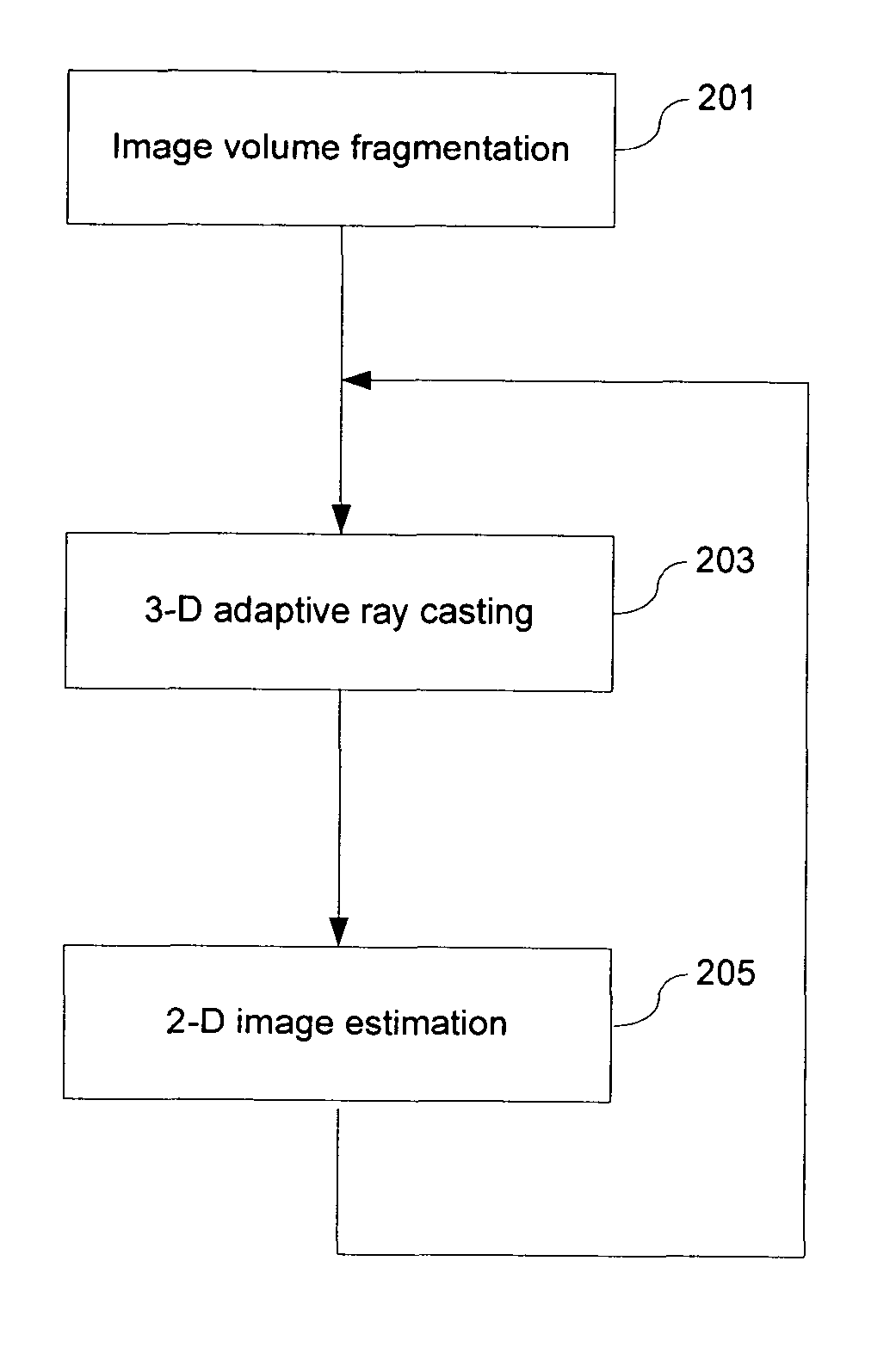Method and system for adaptive direct volume rendering
- Summary
- Abstract
- Description
- Claims
- Application Information
AI Technical Summary
Benefits of technology
Problems solved by technology
Method used
Image
Examples
Embodiment Construction
[0051] FIGS. 1(A) and 1(B) schematically illustrate the basic principle of direct volume rendering using the two embodiments of the present invention. In a 3-D domain represented by the Cartesian coordinates (x, y, z), there is an image volume 106 representing one or more 3-D objects. Direct volume rendering generates a 2-D image by casting a plurality of rays 104 into the image volume 106 and simulating the interactions between the rays and the image volume so as to visualize the 3-D characteristics of the 3-D objects. Note that the shape of a ray in the context of the present invention is not a 1-D line, but a 3-D tube or cone depending on different ray configurations discussed below.
[0052] In the embodiment shown in FIG. 1(A), the plurality of rays 104 are launched from different locations on a radiation plane 102, each ray traveling in parallel to another one towards the image volume 106. The shape of a ray is a tube 103 that has a cross-section of constant size, also referred ...
PUM
 Login to View More
Login to View More Abstract
Description
Claims
Application Information
 Login to View More
Login to View More - R&D
- Intellectual Property
- Life Sciences
- Materials
- Tech Scout
- Unparalleled Data Quality
- Higher Quality Content
- 60% Fewer Hallucinations
Browse by: Latest US Patents, China's latest patents, Technical Efficacy Thesaurus, Application Domain, Technology Topic, Popular Technical Reports.
© 2025 PatSnap. All rights reserved.Legal|Privacy policy|Modern Slavery Act Transparency Statement|Sitemap|About US| Contact US: help@patsnap.com



